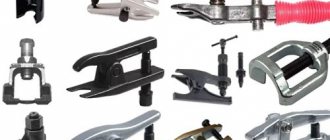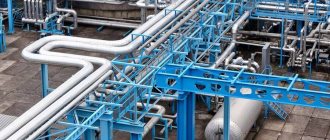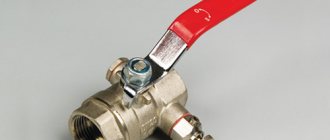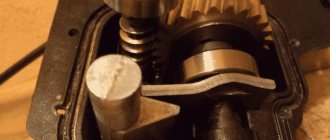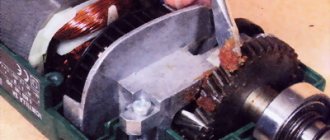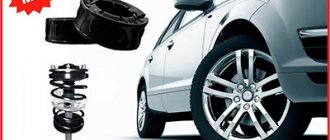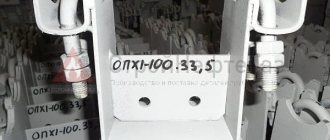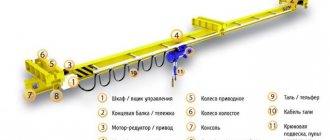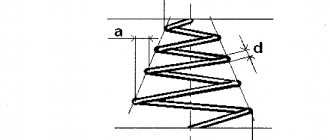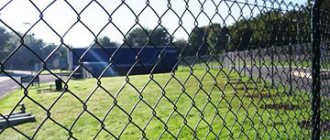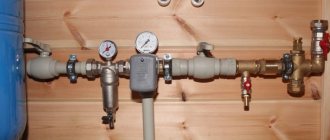Looking for a foothold Part 1. A bit of classical technology
The editors begin a detailed conversation about car suspension. Its participants are prominent market players (both manufacturers and selling companies), experts conducting certification and, in general, all interested parties. Join us! The more interlocutors, the more interesting the result.
To start, I'll start with a fairly typical situation. Everyone has ever seen a Zhiguli standing on the road with a broken front wheel. Everything is clear: they didn’t change the ball joint in time, so it “flew”. And most likely, many argue, the part was found to be of poor quality. And they are not so far from the truth.
The wear of ball joints directly depends on the quality of the part itself, the condition of the road and driving style. However, the first reason – quality – can to some extent compensate for the other two.
The main element of the support is the ball pin. It is its characteristics that determine the reliability and durability of the unit. What do they depend on? Very simple: from the material and manufacturing technology.
I started my career as a metalworking process engineer. Therefore, I will be happy to reflect on this topic.
High-alloy steel grade 38ХТНМ is often used to make fingers. Excellent, I must say, material - it’s not for nothing that it is registered in the technical specifications for original products of the Volga auto giant.
What about technology? How are fingers made? There is no secret: the cold landing method. This is a type of cold die stamping. Like most metal forming processes, upsetting forms an advantageous structure for the product. It crushes the grain of the metal, as if making it denser. The part acquires strength that cannot be obtained either by casting or by cutting the workpiece. Here it is, the basis for future safe operation!
After cold heading, the spherical part of the part is rolled in. This is already the technology of surface plastic deformation (SPD). It allows you to introduce residual stresses into the surface layer of the part - useful stresses that additionally work on the strength of the part.
Of course, you can make a pin by helical rolling, which is what smaller manufacturers do. The method is good, there is no doubt if it is released. pipes and other hollow products. But for the pins of ball joints, helical rolling is not suitable: the slightest deviations from the technical process lead to unacceptable defects.
Let's return to the actual fingers. The thread on them is cold-rolled, due to which its strength characteristics are 15% higher in comparison with cut threads.
But no matter how wonderful the finger turns out to be, it cannot serve without other parts. Well, let's talk about them. The support bodies are made from steel 08 PS by cold stamping, after which they are subjected to volumetric hardening and high-frequency treatment.
The bearing is manufactured using powder metallurgy with hardening and subsequent impregnation in oil. In the poured version of the support, a special composite resin is used, and a special lubricant for ball joints, designed for the entire service life of the unit, is pumped into the support.
Before applying the protective coating, the body parts are shot blasted. It not only promotes better adhesion of paintwork materials, but also additionally strengthens the surface.
Agree: the ball pin has worthy “colleagues”. Together they form a reliable unit with a guaranteed safe service life of more than 40 thousand km. The part itself is coated with black matte paint and a polymer powder composition “colorless varnish”. All of the above provides the product with excellent corrosion resistance. He is not afraid of sandblasting and salt baths of our roads.
To some, the described approach to the production of ball joints will seem conservative: they say, although these are high-quality, they are traditional products. But let the skeptics think about it: healthy conservatism is often useful. The main thing is that such products are identical to the original ones. Their strength and reliability have been tested not only by laboratory tests, but also by many years of operation. And returning to the unfortunate car with a broken wheel, we can say with confidence: something was wrong with its ball joint.
A word from a market participant
Delphi awarded
Delphi Automotive was awarded the "Best Ball Joint of the Year" award for foreign cars at the Interauto 2011 exhibition in Moscow.
“Our ball joints are designed using our original equipment (OE) technologies and are of the highest quality from the supplier to the assembly line. We are very pleased to have received this award, as we were judged by renowned experts in the automotive community,” said Lucia Moretti, President of Delphi Product and Service Solutions. “We will continue to supply supplier-quality ball joints to the production line as part of our wide range of steering and suspension products in the Russian market, as well as worldwide for popular vehicle models.”
Delphi ball joints meet global OE specifications and are tested for strength and durability; tests critical to safety and a safer driving experience.
The ball joint push-out test measures the force required to push/displace a ball joint from its housing. This is a very important test from a safety point of view because it ensures that the part can withstand the forces that a vehicle's suspension system is subjected to under real road conditions. If the force required to push the ball pin is less than the value specified in the supplier's OE conveyor specification, there is a risk of the ball joint failing during normal road use, which could result in loss of directional control of the vehicle.
Additionally, Delphi's new anti-dust coating, with an improved polychloroprene (CR) formulation that provides durability even in extreme temperature conditions, helps protect internal components and ensure continued free movement of the ball joint.
A word from a market participant
Polymer restoration using SJR technology
Did the diagnostics reveal a dangerous gap between the ball and the support liner? A dilemma arises: change or restore. Let us briefly describe the structure of the ball joint.
In the areas marked in red, wear is maximum
The unit consists of two parts, a cage and a rotating ball. Between them is a polymer that dampens hard impacts and reduces friction between metal parts. The system works on the principle of a joint capsule in the human legs. It is this polymer that wears out over time, and dangerous play appears.
Since it is impossible to disassemble the ball joint to replace the liner, there is only one thing left to do - melt the polymer and pour it inside. This is the essence of the sjr method.
Pouring polymers can be of different types
- A hole is made in the outer casing (clip) of the ball joint. You can use a ready-made grease fitting, if available.
- Using a gas burner, the ball joint is heated to the melting point of the polyamide.
- At the same time, blanks (cartridges) made of polyamide, similar to the standard one, are heated in a special extruder.
- Using an extruder under high pressure, the melt is injected into the cavity between the holder and the moving ball. Moreover, all the cracks, crevices and hollows of the standard liner are filled.
- The polymer hardens, taking the shape of the gap. The play has been eliminated, the ball joint has been restored.
Advantages of this method:
- Versatility and affordability.
- Compactness and mobility of equipment.
- Can be used both in a small service station and in your own garage.
- Available consumables.
There are also methods using stationary equipment. The repair technology is close to the factory one used in the manufacture of new ball joints. The cost of repair is approaching the price of a new unit, which makes the process unprofitable.
Ball joints HOLA
There is another serious competitor in the auto parts market - the HOLA brand, whose product range includes ball joints and tie rod ends. Experts recommend purchasing them as a set to ensure reliable connection between the steering wheels of the car and the steering mechanism. Engineers from the Dutch company H&H Groep have been working with the Russian automotive market for many years. HOLA spare parts were initially designed and developed taking into account difficult climatic and road conditions. And the operating results fully confirm the correctness of the choice of materials and technologies used in the brand’s products.
Possible malfunctions of the ball joint
Even a novice motorist can independently identify signs of wear on a ball joint based on indirect signs. It is necessary to pay attention to the behavior of the car during a turn. When the driver has to make special efforts or a characteristic sound (creaking) appears, then the probability of ball failure is high. An additional negative sign is the appearance of knocking while driving the car at low speed on an uneven surface. We recommend carrying out diagnostics when symptoms of wear are noticeable, such as instability of the front wheels and their wobbling to the sides during straight-line movement. Many experts include uneven wear on a car's tires as signs of a worn-out ball joint.
A little theory
The purpose of the ball joints is to ensure the mobility of the vehicle's steered wheels in the horizontal plane while maintaining their vertical position. Simply put, it is a “joint” that allows the wheels to turn when steering. The fundamental design of the part is quite simple and consists of two main elements: a metal “finger” with a spherical tip and a body with a corresponding spherical cavity.
Ball joints are installed as intermediate links between the steering knuckle and the suspension arms. In multi-link suspensions, two ball joints are placed on each steering knuckle - at the top and bottom points of articulation, and on systems with a MacPherson strut, only one support is used at the bottom point. Typically, the threaded part of the ball joint pin is fixed into the steering knuckle, and the housing is attached to the control arm. (The reverse option is less commonly used, such as, for example, in VAZ cars of the Samara family, where the ball housing is mounted on the fist, and the threaded part of the ball pin is on the lower arm.)
There are four types of methods for attaching ball joints to levers. First of all, this is the most common bolted connection until recently. Among owners of used cars, this is the most favorite and desired option, allowing you to change the ball joint separately. Repair will be more difficult if the ball joint is secured to the lever with rivets. It is even more difficult when the ball joint is pressed into the lever - here many manufacturers do not allow the joint to be removed at all, offering only replacement along with the lever. And the apotheosis of non-repairability is a design where the ball housing is integrated into the lever, making up virtually a single whole with it and it is impossible to remove it.
Bolt-on ball joint (left) and mounts integrated into the arm.
It is worth noting that systems with a permanent ball joint are now becoming increasingly widespread, especially in Japanese and Korean cars. Automakers consider them more technologically advanced, and maintainability and the possibility of separate replacement are already receding into the background. And here special responsibility falls directly on the unit itself - the ball joint.
Why do you need a ball joint?
Usually, novice motorists learn what a ball joint is in a car from more experienced colleagues when indirect signs of a suspension malfunction appear. There may be extraneous noise in the wheel area or other factors. In a car, such an element as a ball joint is located not only closer to the wheel. Similar compounds can be found in different parts of the car:
In fact, the more correct name for the block is a ball joint. When a node is called that way, its essence is clear.
Important! The main task of ball joints is to provide freedom of movement to each of the wheels in the horizontal plane, while simultaneously blocking freedom in the vertical plane.
To understand how many supports are installed, it is necessary to consider the type of suspension. The factor influences how many spherical engineers have introduced into their brainchild. The simplest MacPherson pendants make do with two pieces, which are located below. An increase in the number of levers entails an increase in the number of hinges. In double-lever systems, installation of the unit is provided both from below and from above. In German brands such as Audi or Volkswagen, there can be up to five ball joints on one side of the wheel. A few decades ago, the predecessors of spherical elements were pivot analogs. These were heavier products that needed regular lubrication. The principle of their operation implied the possibility of rotation in only one axis, which was negative for controllability. During operation, ball joints work in such a way that they absorb the impact of road irregularities. This creates a huge load on the metal product. However, engineers do not strive to make a ball with maximum strength, giving it a shape so that, if necessary, it can be easily replaced by unscrewing a few bolts. The node has turned into a consumable.
Through progress
Despite its fundamental simplicity, the design of a ball joint has its own characteristics and nuances that directly affect its characteristics. It is no coincidence that since its appearance in the late 40s, this unit has undergone many changes and improvements, having now become a high-tech part.
Materials technologies developed rapidly, and designers abandoned the lubrication of ball joints, starting in the 60s to use polymer “liners” between the body and the pin in combination with permanent lubricant, which was applied once during the manufacture of the part at the factory for the entire service life. And twenty years later, the spring support disappeared from the ball design, having lost its necessity. Progress in the field of industrial equipment has made it possible for manufacturers to produce a body-finger pair with high precision, and the plastic “liners” of previous years have been replaced by new materials - relatives of nylon, capable of retaining their properties and the specified characteristics of the part for longer.
Cross-section of ball joints: on the left is an outdated all-metal design with a spring support and a grease nipple, on the right is a modern part with a nylon-based engineering plastic insert.
Other design elements have also undergone changes. Thus, the previously used anthers with a wire ring fixation were replaced by “integrated” anthers, which are inseparable from the hinge body. They provide much better protection of the assembly from moisture and dust, which cause corrosion, but if they are damaged they cannot be replaced - only together with the ball.
Is it worth lubricating the ball joint?
In order to answer the question whether it makes sense to use lubricant for ball joints and steering ends, let’s consider the operation of the hinge. The designs of ball joints and steering ends for modern cars can be different. However, in any case, it is based on a ball joint and a thrust pin. The hinge rests on the base, which has the shape of a hemisphere, in which the hinge “goes.” On top of this entire structure is covered with a protective boot, preventing dust, moisture, dirt, and debris from getting inside.
Since the support hinge constantly moves while the car is moving, wear occurs on it and the base underneath it. Therefore, in order to reduce wear, reduce the load and increase the mobility of the structure, it is necessary to use lubricants. The manufacturer supplies lubricant in production, however, as practice has shown, its quantity and characteristics are often very weak.
The main requirements for a lubricant are a wide operating temperature range (especially its lower limit), as well as hydrophobicity (so that the lubricant is not washed out by water), but nevertheless, the higher its characteristics and quantity, the longer the hinge joint will last. Therefore, we advise periodically servicing such units to extend their service life.
The old fashioned way
However, despite all the progressive technologies, the old designs with spring support and an “oiler” are still in use - such balls are offered on the spare parts market for repairs for both domestic cars and foreign cars. At the same time, modern maintenance-free ball bearings are also offered. But many consumers prefer the “old and proven”. Why?
Maintenance-free supports with plastic inserts appeared on Soviet VAZ and AZLK cars, but in an era of shortages, this (like the rest) spare part was unavailable. People managed as best they could by building “oil cans” into balls and pumping “solid oil” into them. Something similar is observed now - our motorists still believe that a serviced unit, with due attention, will last longer than an unmaintained one. And it even goes back to the “Soviet origins” - some of our craftsmen also build in “grease nipples” into modern ball joints with permanent lubrication and pump grease into them, sincerely believing that this is very useful and extends the service life of the part.
And again about technology
One of the main physical parameters of the ball joint is the torque and the amount of clearance between the body and the pin. The first determines the ease of rotation of the node elements relative to each other, and the smaller it is, the better. The lower the frictional force of the elements of the part, leading to its wear and failure. (Also, less force will be required to turn the steering wheel, although in the presence of hydraulic boosters this figure is leveled out. But power steering does not facilitate the work of other suspension elements - primarily steering rods and ends, which receive excessive load.)
Dynamics of changes in torque (turning force) and gap (determines the resource) between the body and the ball joint pin (NEO CTR tests). The graphs show how, with increasing mileage, the high moment of an all-metal support quickly decreases and the gap grows, while for a part with an insert made of engineering plastic, with an initially lower moment, the gap remains unchanged.
The work of friction forces leads to an increase in the gap between the pin and the body, which, when it reaches a critical value, makes the ball unsuitable for further use - the part will need to be replaced. It is the increased gap that creates that characteristic knocking sound in the suspension when driving on uneven roads, indicating that repairs are needed. The consequences of driving with knocking ball joints can be unpredictable, since if the suspension joint is disconnected, the entire wheel hub assembly with the steering knuckle is separated and the car lies on the bottom.
Tested by NEO CTR, modern ball joints made using nylon-based engineering plastics maintain the specified pin-to-body clearance for more than 500,000 “turning” cycles. At the same time, in outdated metal balls with an “oiler” under the same conditions, the gap increases four times, reaching a critical value.
But this is still under ideal conditions of bench testing, where there are no other loads. In real operation, ball joints are exposed to many other multidirectional forces: “shock” loads when driving over uneven surfaces, “explosive” loads when the wheel hits a hole in a turn, and all sorts of combinations thereof. Responsible manufacturers always test all their products for tear, bend and impact tests to achieve the best possible performance.
Bench for life testing of ball joints at NEO CTR production. The part undergoes 500,000 “turning” cycles.
The design of the suspension as a whole plays a role in the mileage of ball joints, which may or may not be very successful in terms of loading this unit. The driving style of the owner and the condition of the roads on which he travels have a strong impact. For example, the service life of a modern ball joint with a “nylon” seat and engineering plastic for the same car model can range from 30,000 km to more than 80,000 km.
What's the result?
The first cars had dismountable spark plugs: it was possible (and sometimes necessary) to separate and replace the insulator, clean or change the electrodes. The wheel bearings had to be lubricated regularly. But soon the candle began to be manufactured as a single element and no one here remembers or dreams of collapsible structures. Wheel bearings are lubricated at the factory and require no maintenance. Many elements of a car now take a similar path, and the ball joint is no exception. From a dismountable unit requiring periodic maintenance, the ball joint turns into a high-tech component - reliable, maintenance-free and non-repairable.
Source
Repairing ball joints with polymer using the sjr method: how and why?
Every owner of his own car dreams of saving on its maintenance. Replacing ball joints is one of the expense items, especially taking into account our roads. And if the suspension design involves simultaneous replacement of the ball and lever, the question becomes a pretty penny. To help drivers, SJR technology was invented - restoration (repair) of ball joints with polymer.
- 1 Why is ball joint repair necessary?
- 2 Polymer restoration using SJR technology
- 3 What is needed to carry out the work
- 4 Making an extruder with your own hands: details about the complex
- 5 Restoring balls using a homemade extruder
Do-it-yourself restoration of ball joints
The ball joints carry the load of the front end of the vehicle, including the weight of the engine. At the same time, when moving, they receive constant impacts from the wheels in any direction. No matter what durable material these parts are made of, their service life is limited. It’s good that in many cases restoration with your own hands is possible.
Causes of ball joint wear
The main enemies of the ball have always been water and dirt. They can get to the joints only if the boot wears out - a rubber cover that protects the hinge from external influences. It either wears out during operation (dries out, cracks), or can be damaged mechanically (for example, during suspension repairs).
The service life of the ball joint varies from 15 thousand km to 120. The indicator depends on the operating conditions of the car and the condition of the protective boot.
How can I restore functionality?
It is important to know! After repair, the ball is not restored to the condition of a new part. The service life will be shorter. But you don’t have to worry about operational safety.
There are many recovery methods. A fairly popular repair method is the SJR technology, when molten polymer is pumped into the cavity between the holder and the ball.
We will consider repairs with disassembly of this unit.
To understand the mechanism of operation of the support, look at the diagram:
Often the problem occurs due to damage to the boot, and not to the metal itself
Only the polymer liner is subject to wear. It is when it is abraded that backlash appears. If you continue to drive with a loose ball joint, the top of the cylinder will also break, and then the pin may fly out of the race.
Do-it-yourself restoration with liquid fluoroplastic
This can be done, but it is difficult. You will need special equipment and polymer (fluoroplastic). The principle is this: we simply drill a hole in the bottom of the ball, then cut a thread so that we can screw in a special metal “receiver”.
A “receiver tube” from a special press (extruder) is screwed into this thread, which supplies molten fluoroplastic under pressure. It should be noted that it melts at temperatures of 170 - 200 degrees Celsius.
Then we heat the tube, usually the press itself with the “liquid mass”. Inside the spherical fluoroplastic also melts + mixes with the mass that enters through the tube, the process occurs under a pressure of 2 atmospheres.
After filling, the tube is disconnected and the press with the polymer is removed. The polymer hardens and forms a monolith that envelops the “ball”; all knocks and vibrations pass - after all, the broken place is filled with polymer. A special valve or “grease fitting” is screwed into the hole that has been drilled.
After such a repair, the ball joint can run for a very long time, sometimes even no less than a new one. Let's watch a detailed video.
However, it is worth noting that if the boot is broken and a lot of dirt gets inside the “ball”, then you should first clean it, otherwise the wear will be very great. Cleaning should be up to the mirror.
Also useful video.
That's all. In conclusion, I would like to say that if it is possible to change and install a new original support, it is better to do it. After all, a new one, I emphasize ORIGINAL (not China), will always be better than a restored one. It will last you for many thousands of kilometers.
Read our website, sincerely your AUTOBLOGGER.
( 6 votes, average: 4.50 out of 5)
Ball restoration options
First of all, the assembly must be removed correctly. The finger sticks so tightly to the suspension arm that it is practically one piece with it. Beforehand, preferably one day before, the joint is treated generously with penetrating liquid. Use WD-40 or regular kerosene. There are two ways to remove your finger from the eyelet:
Important! Do not hit the finger directly. You will rivet the threaded connection, and it will be impossible to screw on the working fastening nut.
So, the ball joint is in your hands. The outer cylinder (cage) is a monolithic structure. It is impossible to remove the finger.
Ball joint options for different car models
Ball joint device
The ball joint is the front suspension element that bears the main load. It can be lower or upper. The main part is a finger with a round head. The head is enclosed in a dirt-proof cover with lubricant. The entire device is hidden in a plastic case, which over time begins to let dirt through. Getting between the head and the cover, sand and earth scratch the head and the protective shell of the cover. Penetrating moisture causes rust.
Modern restoration technology allows you to repair the supports yourself, without disassembling the car.
Under pressure, a special type of molten polymer is injected into the housing of the support assembly. All voids and cracks that appear in the body are filled with plastic, which creates an additional lens-shaped gasket in the required places. Restoration takes only 15 minutes, equipment based on American designs is used in most auto repair shops.
Making a serviceable cover
The blind part of the support body is made removable. At the same time, you can change the plastic inserts many times, each time restoring the functionality of the support. The removable bottom allows for routine inspection without removing the ball joint from the suspension.
Plug: do it yourself
Tip: To make the plug accurately, use two ball joints. Cut the bottom off one using a grinder and use it as a template for the shape.
Important! It is necessary to ensure that the thread is locked, otherwise the bottom may unscrew during operation.
Repair glass: everything ingenious is simple
The principle is the same as in the first case - to make a replacement bottom. Only the execution is different. If the bottom of the support is too thin to make a full threaded connection, it is necessary to make a repair cup. It is turned on a lathe from a steel circle of suitable diameter. The same hole is made in the bottom of the glass and a thread is cut. And finally, the support replacement bottom is made.
Then the bottom of the cylinder is cut off from the ball joint using a grinder or a hacksaw. A repair glass is welded in its place. The method is more labor-intensive, but it does not allow the finger to heat up during the dismantling process.
Scheme for manufacturing a product variant
Further operation follows the same scheme: when play appears, unscrew the repair plug, remove the pin, change the plastic inserts.
It is worth noting that spare parts manufacturers produce many options for repair ball joints. Replacement inserts and new pins are sold for these collapsible housings. However, in our article we are considering self-production.
Welding as an alternative to replacement
The fastest option for restoring a ball joint. The rear (supporting) part of the cylinder is simply cut off. The method doesn’t matter - you can use a hacksaw, or you can use a grinder, but there will still be a temperature effect afterwards.
Having gained access to the cylinder cavity, you can change the polymer liners.
Important! Before installing new liners, be sure to remove any burrs formed during cutting. Torn metal edges will quickly split the liners during use.
After installing the new liners, the bottom is carefully welded. In this case, it is necessary to compensate for the production of metal formed during cutting with the thickness of the seam. Usually it is 1.5–2 mm.
Welding is one of the most painstaking options
Important! Use a welding method that minimizes temperature effects. The polymer liner inside may reach the melting point. Therefore, until it cools completely, do not apply any loads to the finger to avoid deformation of the liner.
Flaring as a repair method
This technology requires professional equipment, so it is impossible to flare a ball in a garage. A crimp ring is cut to fit the diameter of the finger ball.
Turning work will find its place here too
The seat and ball are cleaned of dirt and polished. New liners and a crimp ring are selected or machined from caprolon.
It happens that caprolon is not available, but replacing it with steel is not recommended. It’s better to spend money on this material once than to replace it more often than it could be
After assembly, the crimp ring is pressed in and rolled on a press. When crimping, special inserts-clips are used according to the diameter of the ring.
Inserts can also be found in car dealerships.
Ball joint repair machine
To correctly perform work on restoring the ball joint, you must use a machine. It is designed to measure the temperature of the polymer and correctly feed it into the ball housing.
A standard machine for restoring ball joints consists of:
The extruder with the polymer inside is screwed to a pneumatic cylinder. A threaded hole is made in the worn support and an adapter nozzle of the required size is inserted into it, which is connected to the extruder with a nozzle.
After the polymer material becomes soft, a pneumatic cylinder is launched, which squeezes it through the plunger and nozzle into the support. If the material is filled incorrectly, the ball will last about 30,000 km.
It is worth considering that overheating a polymer material deprives it of all its necessary properties. Therefore, you should carefully read the instructions supplied with it and monitor the temperature according to the machine readings.
You can construct equipment for restoring ball joints yourself: make an extruder on a lathe, and buy the remaining parts at a hardware store.
The only reason why this technology cannot be used is corrosion and mechanical damage to the metal structure itself. In this case, the ball joint is not subject to any restoration and, accordingly, to further use.
It happens that a do-it-yourself restored ball joint can last longer than cheap duplicates. Even a novice car enthusiast can replace this unit.
